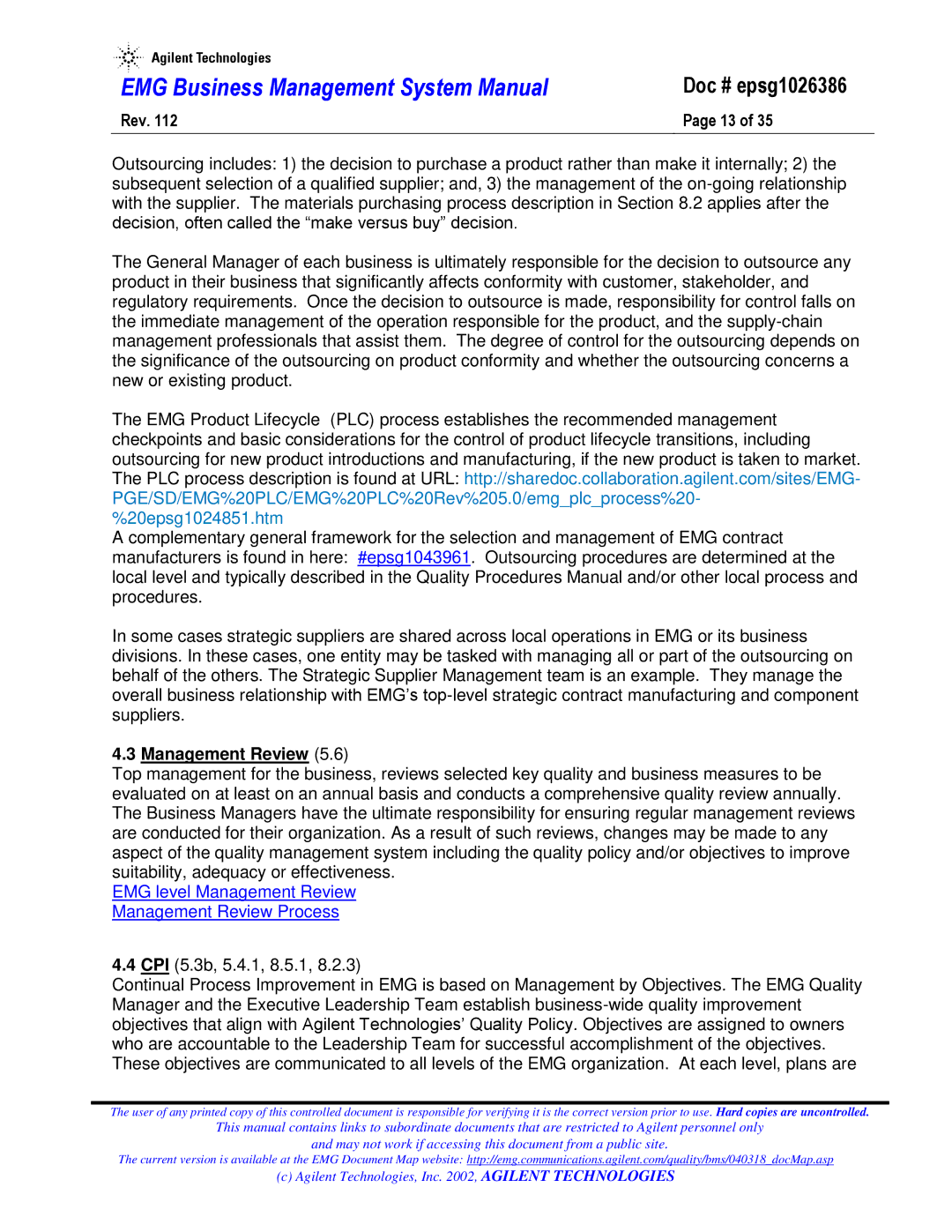| | |
EMG Business Management System Manual | Doc # epsg1026386 | |
Rev. 112 |
| Page 13 of 35 |
|
|
|
Outsourcing includes: 1) the decision to purchase a product rather than make it internally; 2) the subsequent selection of a qualified supplier; and, 3) the management of the
The General Manager of each business is ultimately responsible for the decision to outsource any product in their business that significantly affects conformity with customer, stakeholder, and regulatory requirements. Once the decision to outsource is made, responsibility for control falls on the immediate management of the operation responsible for the product, and the
The EMG Product Lifecycle (PLC) process establishes the recommended management checkpoints and basic considerations for the control of product lifecycle transitions, including outsourcing for new product introductions and manufacturing, if the new product is taken to market. The PLC process description is found at URL: http://sharedoc.collaboration.agilent.com/sites/EMG- PGE/SD/EMG%20PLC/EMG%20PLC%20Rev%205.0/emg_plc_process%20- %20epsg1024851.htm
A complementary general framework for the selection and management of EMG contract manufacturers is found in here: #epsg1043961. Outsourcing procedures are determined at the local level and typically described in the Quality Procedures Manual and/or other local process and procedures.
In some cases strategic suppliers are shared across local operations in EMG or its business divisions. In these cases, one entity may be tasked with managing all or part of the outsourcing on behalf of the others. The Strategic Supplier Management team is an example. They manage the overall business relationship with EMG‟s
4.3Management Review (5.6)
Top management for the business, reviews selected key quality and business measures to be evaluated on at least on an annual basis and conducts a comprehensive quality review annually. The Business Managers have the ultimate responsibility for ensuring regular management reviews are conducted for their organization. As a result of such reviews, changes may be made to any aspect of the quality management system including the quality policy and/or objectives to improve suitability, adequacy or effectiveness.
EMG level Management Review
Management Review Process
4.4CPI (5.3b, 5.4.1, 8.5.1, 8.2.3)
Continual Process Improvement in EMG is based on Management by Objectives. The EMG Quality Manager and the Executive Leadership Team establish
The user of any printed copy of this controlled document is responsible for verifying it is the correct version prior to use. Hard copies are uncontrolled.
This manual contains links to subordinate documents that are restricted to Agilent personnel only
and may not work if accessing this document from a public site.
The current version is available at the EMG Document Map website: http://emg.communications.agilent.com/quality/bms/040318_docMap.asp
(c) Agilent Technologies, Inc. 2002, AGILENT TECHNOLOGIES
